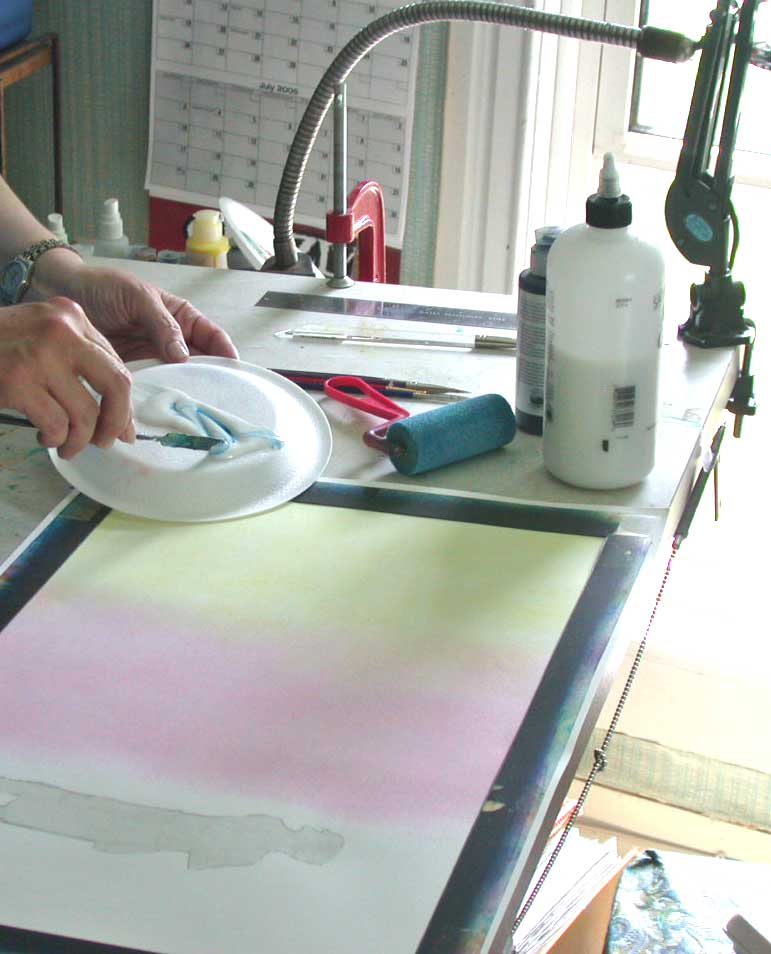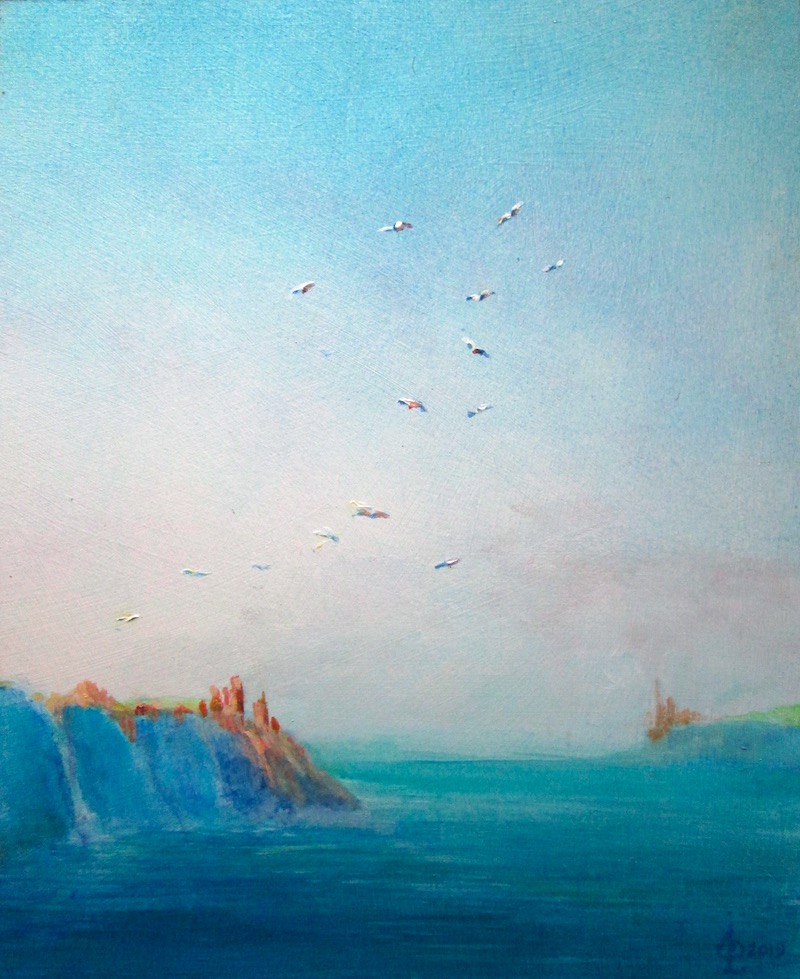Sponge Brush Painting
This
Visual Art Tip is a little about my technique of sponge brush
painting as it applies to "fine art" painting. I developed
my technique to accomplish a certain look for some illustrations I
was working on.....but sponge brush painting can easily work in many
"fine art" situations as well.
My
initial problem was to get nice smooth graduations in a monochromatic
background for a page in an alphabet book. For the illustrations for
Easter Day Alphabet, I'd come up with the concept to paint designs as
a kind of "wallpaper" background with the main image, text
and large alphabet letter going on top.I wasn't using any computer
graphics for this particular book, I don't use an airbrush, and I was
working in acrylics....not known for their ease of getting a smooth
graduation in colours. Unwanted visible brush marks being one of the
main problems.
I
hit upon the idea of using sponge brushes after looking at a home dec
magazine, and reading about faux finishes. You can see more about
it in a previous post: I Never Met a Art Technique I didn't
like.....
I
found that if I puddled a bit of the glazing liquid on my palette
then dropped in a drop of fluid acrylics and mixed with a knife.....I
got a lovely looking glaze
Smooth
sponges allow me to graduate colours. After one coat of glaze dries
I can easily smooth on a different colour and seamlessly blend the
edge. All this without any muddying of the two colours, as the dried
acrylic glazes stay separate. I usually use a gessoed ground on
masonite board for my fine art paintings. This accepts the glazing
especially well....the light just goes right thru the acrylic glazes
and bounces off the white gesso and returns outward with a lovely
glow.
For
landscapes in the "fine art" mode, I found that skies
would be luminous done in layers of acrylic blues and greens, just as
Maxfield Parrish discovered using oils. When I wanted to fill in
foliage for trees and such, I just grabbed a sea sponge and dabbed
away. First using a blue base for shadows, and covering with a
variety of greens for the background foliage. Then (following
Maxfield Parrish's technique) I would dab on pure white for
highlights on leaves, which would later be glazed over with various
colours as needed....i.e. oranges for fall, yellow for summer etc. I
used this technique for this painting:
LAND'S END
among
others: It was the perfect technique for grasses, clear skies and
flowing water.



Absolutely lovely!
ReplyDeleteThank you SO much for stopping by and the kind words!
ReplyDelete